Giant Azaes-Itzamna: Ninth King Of Atlantis, Founder Of Chichen Itza And Teacher Of Maya People
A. Sutherland - AncientPages.com - The Mayan pantheon comprises many gods. All of them stand below the greatest and most powerful of them – Hunab Ku, who is the supreme god and creator in the Maya pantheon.
He is “the god set over the gods”, invisible and beyond human understanding.
One of Hunab Ku’s son is Itzamna ("House of Lizard"), a name that corresponds to the Mayan mythological views of the Universe. The Maya believed that the earth rests on the back of a great lizard and that the cosmos was her home.
Plato's "Critias" may help us understand a very distant past and origin of great god Itzama.
Plato narrates that Poseidon fell in love with Cleito, the daughter to Evenor, the Atlantean, and had five pairs of sons who were twins.
One of the Atlantean twins was Azaes, known to the Maya as Itzamna. All the sons were given ten kingdoms and lived in peace with fabulous reaches of Atlantis. These Atlanteans built temples, palaces, harbors, canals and bridges and had access to rich forests, trees and minerals.
Later their descendants, “lived there for many generations, as sovereign of the sea and many islands, as has been spoken of vast territories and large people, from within, covering his kingdom is the land that extends to the Egypt and Tirrenia…”
Our earlier article was devoted to the Bacabs, the four giant sons of Itzama.
Now it is time to present Azaes/Itzamna himself, the ninth king of Atlantis listed in Plato's “Critias”.
As it was recorded in the chronicles, Itzamna arrived from the east with a group of the “Atlantean culture-bearers”. He founded the Maya city Chichen Itza and as the bringer of culture to his people, Itzamna became the national god of the Maya.
Itzamna possessed many different aspects. He was addressed as “Lord of the Night and the Heavens”, was responsible for rainfall, taught people to dig irrigation canals, and invented for them books and writing. His priests taught the use of herbs to treat people. His wife, Ix Chel was the goddess of medicine, childbirth and weaving.
See also:
Bacabs: Four Atlantean Gods Who Were Giants And Sons Of Itzámna, Maya God Of Heaven And The Sun
Ceiba Tree: Sacred Tree Of Life Of Maya People And Universal Concept In Ancient Beliefs
Kukulkan: Feathered Serpent And Mighty Mayan Snake God
Bolivia And The Mystery Of The Twins Of Atlantis
Itzamna was presented differently: as the dominant monarch, writer, old man with large square eyes and a hooked nose, and sometimes as a great celestial serpent. On the Maya ceremonial vessels, he was depicted as the king sitting on the throne before other gods.
Itzamna, seems to have been associated with the Maya sun god, Ahau Kin ("Lord of the Sun Face"). The images of the two deities have many similarities.
Often called Yaxkokahmut, ‘lord of knowledge’, he was identified with the sun-god, he was also lord of the east and the west.
Itzamna was the master of heaven, who, according to beliefs, "lived in clouds".
He appeared as an old man, whose body was decorated with the symbols of planets and the astronomical signs. At the same time, this god was considered a kind of two-headed dragon. It is worth mentioning that dragons roaming the sky were a frequent motif of myths and legends among ancient people of China, Babylonia, Tibet, India and ancient Egypt.
“Portrayed as a fair-skinned, bearded figure among the beardless natives, his title was “The First One.” He holds up the sky in the temple art of Yucatan’s foremost Maya ceremonial center, Chichen Itza, which was named after him and his descendants, the Itzas,” wrote Frank Joseph in “The Atlantis Encyclopedia”
“Chichen Itza is particularly noted for its Atlantean statuary and sculpted relief. Azaes-Itzamna was probably a real colonizer from Atlantis, who established his allied kingdom, which eventually took his name.”
Written by – A. Sutherland AncientPages.com Staff Writer
Copyright © AncientPages.com All rights reserved. This material may not be published, broadcast, rewritten or redistributed in whole or part without the express written permission of AncientPages.com
Expand for referencesReferences:
"History of the discovery and conquest of Yucatan" Juan Francisco Molina Solís.
Thompson J. E. S. The Bacabs: Their Portraits and Their Glyphs
Karl Taube, The Major Gods of Ancient Yucatan.
Eric S. Thompson. Historia y religión de los mayas
More From Ancient Pages
-
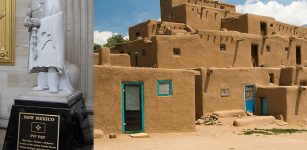 On This Day In History: Pueblo Indians Capture Santa Fe From The Spanish – On August 21, 1680
News | Aug 21, 2016
On This Day In History: Pueblo Indians Capture Santa Fe From The Spanish – On August 21, 1680
News | Aug 21, 2016 -
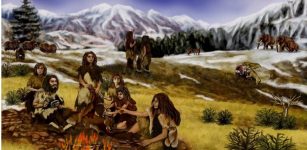 Neanderthals Changed Ecosystems 125,000 Years Ago
Archaeology | Dec 16, 2021
Neanderthals Changed Ecosystems 125,000 Years Ago
Archaeology | Dec 16, 2021 -
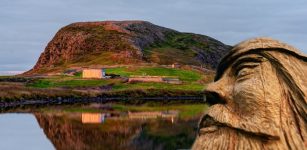 Sacred Helgafell Mountain And The Story Of Torolv Mostrarskjegg
Featured Stories | Mar 13, 2024
Sacred Helgafell Mountain And The Story Of Torolv Mostrarskjegg
Featured Stories | Mar 13, 2024 -
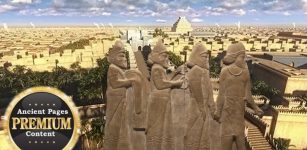 Unknown Ancient God Was Worshipped In Mesopotamia – Sacred Texts And Archaeology Reveal
Civilizations | May 9, 2018
Unknown Ancient God Was Worshipped In Mesopotamia – Sacred Texts And Archaeology Reveal
Civilizations | May 9, 2018 -
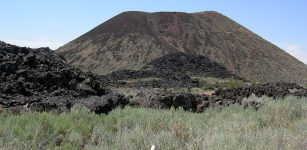 Something Surprising Happened With Temperature Since The Start Of The Holocene – New Study
Archaeology | Oct 10, 2022
Something Surprising Happened With Temperature Since The Start Of The Holocene – New Study
Archaeology | Oct 10, 2022 -
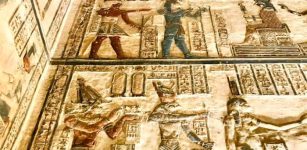 New Images From The Magnificent Dendera Temple Where Restoration Works Continue
News | Mar 15, 2022
New Images From The Magnificent Dendera Temple Where Restoration Works Continue
News | Mar 15, 2022 -
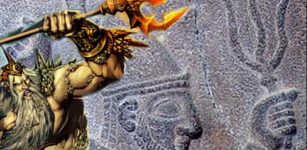 Trident: Powerful Religious Symbol Found In Many Ancient Cultures
Ancient Symbols | Dec 4, 2019
Trident: Powerful Religious Symbol Found In Many Ancient Cultures
Ancient Symbols | Dec 4, 2019 -
 Discovery Of Second Viking Site Point Rosee In North America Could Re-Write Ancient History
Archaeology | Apr 1, 2016
Discovery Of Second Viking Site Point Rosee In North America Could Re-Write Ancient History
Archaeology | Apr 1, 2016 -
 Remarkably Well-Preserved 2,500-Year-Old Canoe Discovered In Swiss Lake
Archaeology | Sep 16, 2023
Remarkably Well-Preserved 2,500-Year-Old Canoe Discovered In Swiss Lake
Archaeology | Sep 16, 2023 -
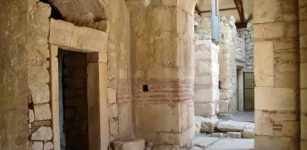 Has The Tomb Of The Real Santa Claus Been Found In Turkey?
News | Oct 5, 2017
Has The Tomb Of The Real Santa Claus Been Found In Turkey?
News | Oct 5, 2017 -
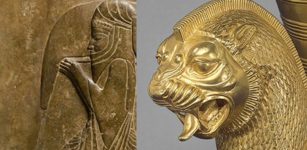 Peace Of Callias – A Treaty That Ended The Greco-Persian Wars
Ancient History Facts | May 15, 2019
Peace Of Callias – A Treaty That Ended The Greco-Persian Wars
Ancient History Facts | May 15, 2019 -
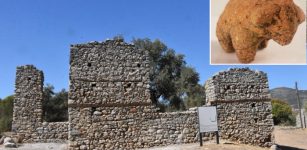 Children’s Toys Among Roman-Era Artifacts Unearthed At Ancient City Of Beçin Turkey
Artifacts | Oct 14, 2020
Children’s Toys Among Roman-Era Artifacts Unearthed At Ancient City Of Beçin Turkey
Artifacts | Oct 14, 2020 -
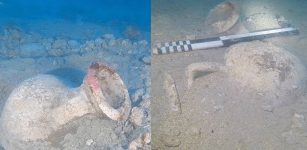 2,ooo-Year-Old Ancient Roman Treasure Found Underwater Of The Coast Of Portofino, Italy
Archaeology | Jan 31, 2019
2,ooo-Year-Old Ancient Roman Treasure Found Underwater Of The Coast Of Portofino, Italy
Archaeology | Jan 31, 2019 -
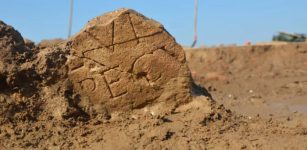 Surprising Discovery Of Almost Intact Roman Sanctuary With Temples In The Netherlands
Archaeology | Dec 23, 2022
Surprising Discovery Of Almost Intact Roman Sanctuary With Temples In The Netherlands
Archaeology | Dec 23, 2022 -
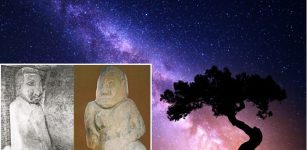 Controversial Stone Statues Of Niulang And Zhinyu And The Legend Of The Heavenly Queen And Milky Way
Artifacts | Sep 8, 2017
Controversial Stone Statues Of Niulang And Zhinyu And The Legend Of The Heavenly Queen And Milky Way
Artifacts | Sep 8, 2017 -
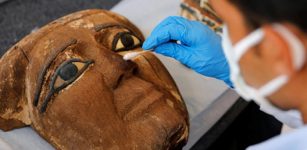 Saqqara Necropolis: Biggest Archaeological Discovery In 2020 – Photos Revealed
Archaeology | Nov 14, 2020
Saqqara Necropolis: Biggest Archaeological Discovery In 2020 – Photos Revealed
Archaeology | Nov 14, 2020 -
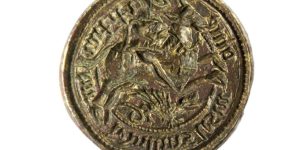 Rare Bronze Seal Matrix Of St. George Slaying The Dragon Discovered In French Castle
Archaeology | Mar 22, 2022
Rare Bronze Seal Matrix Of St. George Slaying The Dragon Discovered In French Castle
Archaeology | Mar 22, 2022 -
 World’s Oldest Tattoos Discovered On Egyptian Mummies Re-Write History Of Tattoos
Archaeology | Mar 2, 2018
World’s Oldest Tattoos Discovered On Egyptian Mummies Re-Write History Of Tattoos
Archaeology | Mar 2, 2018 -
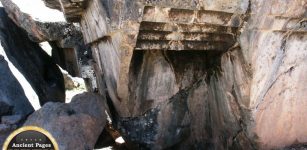 Enigma Of Ancient Upside Down Stairs At Sacsayhuamán
Featured Stories | May 27, 2014
Enigma Of Ancient Upside Down Stairs At Sacsayhuamán
Featured Stories | May 27, 2014 -
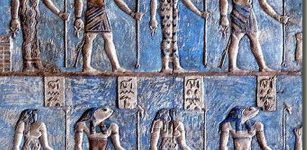 Number Eight Powerful Symbol In Ancient Traditions Of Many Cultures
Ancient Symbols | Dec 8, 2017
Number Eight Powerful Symbol In Ancient Traditions Of Many Cultures
Ancient Symbols | Dec 8, 2017



